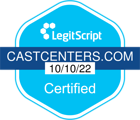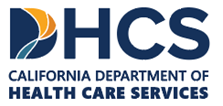Opioid use disorder, or OUD, is a chronic medical condition experienced by millions of Americans. This challenging addiction is wrought with the possibility of relapse. The urge is strong with opioids. Recovery is possible. How is opioid addiction treated? Where do you begin if you are addicted? You can be successful if you commit to change, then medically monitored detox with the help of a solid team of treatment professionals.
Assessment and Evaluation to Initiate Treatment Plan
How is opioid addiction treated when you are overwhelmed by the symptoms of addiction? Deciding to end your opioid usage is the first step, followed by reaching out to someone for help. Reaching out to a friend or family member or taking the massive action yourself to contact a treatment center for advice is a life-altering step. Opioid use disorders are debilitating, and treatment begins when that decision is followed up.
Before detox can occur, the addicted individual must undergo a comprehensive assessment and medical evaluation by a medical professional. Before planning therapy options, it is critical to determine if any emerging mental health issues, physical conditions, and limitations are present. How is opioid addiction treated once the initial evaluation is completed? Detoxification from the substance must occur to move forward.
Addiction to opioids over a long-term course has devastating mental and physical consequences. In addition, desensitization forces the user to use a higher dosage to obtain the desired effect. Brain chemistry is dangerously affected by opioids, and the brain’s receptors begin to require the drug to function. How is opioid addiction treated if the body and mind are so dependent on the drugs? Drug treatment programs can address this issue.
Treatment Options with Opioid Addiction Begin with Detox
Once the decision has been made to stop using opioids, it is essential to move forward immediately. Time is of the essence when ending addiction. Securing a professional treatment facility with diverse treatment options is the first step. Medically monitored detox that may use medications is safe and ensures the user is kept as comfortable as possible during detox.
Medication-assisted treatment (MAT) has evolved into a successful detox method some treatment facilities utilize. However, less than half of the privately-funded treatment programs offer MAT, and a smaller percentage of patients receive the benefits. So, how is opioid addiction treated? A lack of understanding and education concerning MAT protocols breed misconceptions concerning the use of drugs to overcome drug addiction, but investigating this treatment option is essential.
Methadone and buprenorphine are common prescription medications that ease withdrawal symptoms in detox. However, the fear of a painful detox experience can cause many people to hesitate and sometimes change their decision to end their addiction. So how is opioid addiction treated with MAT? First, medications can restore balance to brain chemistry, allowing for healing, and then the body follows by eliminating the toxic substance.
Patients who participated in MAT programs with a professional treatment center were more likely to complete a successful detox and move on to a treatment plan. How is opioid addiction treated after detox? Once the substance in question is removed from the body and mind, individual therapy can begin immediately. Inpatient programs remain the plan of choice for those eligible for this plan.
Opioid Withdrawal Symptoms and Timeline for Detox
Withdrawal symptoms and detox time frames vary in severity and length depending on the addiction time and the substance used. So how is opioid addiction treated throughout this challenging period? MAT relieves the uncomfortable physical symptoms while the professionals monitoring the detox explain the processes.
You can generally expect a range of the following symptoms affecting the mind and body throughout detox, ranging from mild to severe:
- Nausea, vomiting, and diarrhea
- Insomnia
- Anxiety and high blood pressure
- Increased body temperature
- Racing heart
- Muscle and bone pain
- Sweating and chills
How is opioid addiction treated throughout detoxification, and how long does it last? The detox timeline varies depending on many factors. For example, the timeline depends upon what type of opioids were being abused and the individual’s metabolism. In addition, how long the patient had an opioid use disorder can also affect the withdrawal timeline. Relapse is a dangerous consideration throughout this process and should be avoided at all costs.
The following timelines for withdrawal symptoms depending upon the substance, are standard:
- Heroin withdrawal symptoms present within eight to twelve hours after last usage and peak in one to three days, continuing up to seven days.
- Short-acting opioids, including morphine, oxycodone, and fentanyl, indicate initial withdrawal symptoms within eight to twenty-four hours and linger for up to ten days.
- Long-acting opioids, including extended-release forms of morphine, oxycodone, hydrocodone, and fentanyl, present with first withdrawal symptoms in up to thirty-six hours. Withdrawal can extend up to fourteen days or longer.
Treatment for Opioid Use Disorder After Detoxification
How is opioid addiction treated after detox has been completed? First, individual therapy, including cognitive behavioral therapies, is immediately instituted. Next, new coping mechanisms are developed through intense education to prevent relapse. The relationship between therapist and patient during this period is critical. Delving deep into past traumas and how the addiction began is the first goal.
Group therapy is beneficial in building a solid support system. Identifying with other newly sober individuals and sharing personal experiences, emotions, and feelings build trust and the ability to be vulnerable without using drugs. In addition, continued therapy will teach new lifestyle habits and how to live sober without opioids.
Find Help for Opioid Addiction in Los Angeles, CA Now
If you or a loved one is struggling with an opioid use disorder in California, contact our center now. Cast Centers believe that medically monitored detox is critical for successfully treating opioid addiction. Medication-assisted treatment is also an option within our center. Investing in your recovery can begin now. Contact our experienced treatment staff directly to schedule your assessment.
GET STARTED TODAY!
(323) 457-8208
CAST Centers is Proud to Celebrate Over 18 Years
Helping Individuals & Families
Programs
What We Treat
-
Substance Abuse
Insurance
Alumni
Contact Cast Centers
CAST Centers
630 N Doheny Drive
West Hollywood, CA 90069
(323) 457-8208
Email
Administration
632 N Doheny Drive
West Hollywood, CA 90069
(323) 457-8208
Email
Service Area
CAST Centers is licensed by the California State Department of Health Care Services. DHCS Certification for Intensive Outpatient and Outpatient Services.
License Number: 190936BP.
Expiration Date: 8/31/2025.
Copyright © 2022 CAST Centers. All rights reserved.
Privacy Policy | HIPAA | Terms of Use | Site Map


